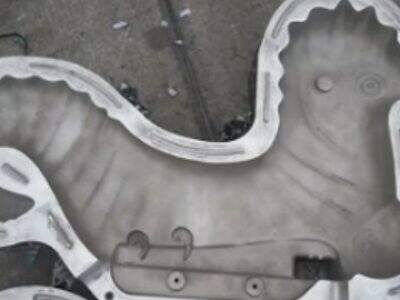We at Young Mould are of the opinion that the selection of materials is of crucial significance in rotomolding molds. Everything from toys to the components of heavy machinery is made through Rotomolding. It involves melting plastic in a hollow mold, and then spinning it while it heats up and cools down. This guides the plastic into the final product. During this process, high-quality molds used for manufacturing contribute a lot to the strength and toughness. If the molds are strong, it can help in production of good quality products consistently.
Influence of Material Selection on Rotomolding Molds
One of the critical considerations in designing a rotomolding mold is the material selection. Choosing the right material is a critical aspect of the design process. Directly the type of material that we use will determine how long the mold will last, how much wear can withstand as well as what types of products can be produced. Do not make the mold must be made of some not strong enough material, and the mold production of products can not be good. This generates a huge amount of waste meaning that more materials end up in the landfills. It may also slow down production rates, or how quickly the products can be made, and increase the cost of repairs when something goes wrong.
Material Selections Options for Rotomolding
Opting for the right rotomolding mold material requires consideration of several factors. Note that we need to know the mold size and shape and the product type to make these calculations. The materials we select also need to be sufficiently durable to withstand the high temperatures of heating and cooling. Some common materials used in rotomolding molds include different materials that offer specific benefits. Aluminum (for instance) is known for being strong, lightweight, and easy to work. They can be molded into a variety of shapes fairly easily. Steel molds, however, are extremely durable and can last for many years, making them a great choice for heavy-duty tasks. Finally, plastic molds can be the least expensive overall, particularly when producing small quantities of product. They’re a fine option for projects with minimal production needs.
The Impact of Material Properties on Mold Performance
The material that we choose for a rotomolding mold plays a major role in its performance. There are two groups of material properties: one where thermal properties are well established, and the other with well-defined mechanical properties. Thermal properties refer to material's ability to withstand high heat without distorting or getting damaged. For instance, rotomolding works really well with materials that have a high temperature tolerance without melting, warping, or cracking. Mechanical properties has to do with how strong and tough a material can be. The pressure and impact that occur during molding can only be handled by strong materials such as steel and aluminum. That means they are less likely to break or get damaged when they are crafting the products.
The Importance of Choosing the Right Material
Another common rotomolding mistake occurs when individuals do not take material selection seriously. Many manufacturers may pay more attention to the appearance of the mold and the design of the mold than the properties of the material itself. That can lead to a number of problems. As an example, if the material selected is not appropriate, it may lead to more frequent repair requirements. That means time and money spent repairing things instead of producing products. Also, using the wrong material can increase production time, meaning it takes longer to get the products to customers. Ultimately, it can lead to variable product quality, in which some products are good and others do not. Consequently, rotomolding mold material selection is a very critical factor. This allows for better performance, lower costs, and more efficient production.
Material Selection for Better Mold Performance
The Key to Getting the Most Out of Rotomolding Molds: Choosing the Right Material Selecting a material very much depends on the design of the mold, the product type, and environmental conditions. At Young Mould, we prioritize premium materials in every product made by our craftsmen. This meticulous selection not only allows us to deliver quality products on-time but also significantly reduces repair and maintenance costs.
To summarize, selecting the proper material is one of critical keys to successful performance of rotomolding molds. For high-quality products, choosing the right material according to the mold design, fragile product and environmental conditions for product usage. This can also result in cost savings and lessened maintenance needs. At Young Mould, Quality materials are always a top priority for us and our Moulds, Material selection is just one example of our commitment to providing our customers with the highest quality products and services in our rotomolding industry. This way, we can foster relationships with our customer and guarantee their approval for our products.
 EN
EN
 AR
AR
 BG
BG
 HR
HR
 CS
CS
 DA
DA
 NL
NL
 FI
FI
 FR
FR
 DE
DE
 EL
EL
 HI
HI
 IT
IT
 JA
JA
 KO
KO
 NO
NO
 PL
PL
 PT
PT
 RO
RO
 RU
RU
 ES
ES
 SV
SV
 ID
ID
 LV
LV
 LT
LT
 SR
SR
 SL
SL
 VI
VI
 SQ
SQ
 ET
ET
 HU
HU
 TH
TH
 TR
TR
 AF
AF
 GA
GA
 CY
CY
 BE
BE
 LA
LA
 UZ
UZ


